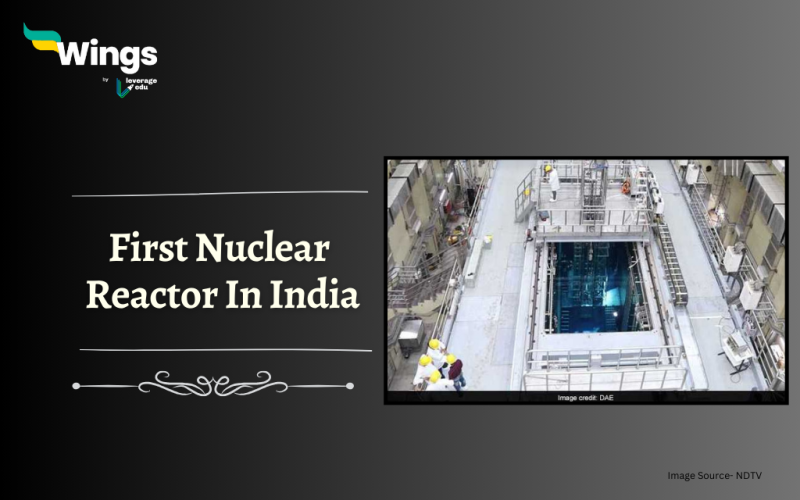Candidates preparing for various competitive exams or Government exams such as SSC, RRB, Bank, Insurance, etc. must know the list of nuclear power plants and the first nuclear reactor in India thoroughly, as it is covered in the general awareness section. UPSC aspirants must also go through the List of Nuclear Power Plants in India carefully, as they might also encounter questions based on it in the UPSC Prelims.
Table of Contents [show]
First Nuclear Reactor In India: Apsara ( 1956 )
Apsara, Asia’s first research reactor, became operational at the Bhabha Atomic Research Centre in Trombay in August 1956.
- Apsara is a light-water swimming pool-style reactor with a nominal power output of one megawatt thermal (MWt).

The Smiling Buddha: India’s First Nuclear Testing (1974)
In 1974, India conducted its first successful nuclear test, codenamed “Smiling Buddha.” This milestone marked India’s determination to pursue advanced nuclear energy in India for peaceful purposes, such as energy generation and scientific research. This historic event brought India into the global nuclear fold and positioned it as a player with significant potential.
List of Nuclear Power Plants In India
The first nuclear reactor in India was established in 1969. Apart from them, there are 7 nuclear energy power plant locations in India, which are listed below
| Nuclear Power Plants in India: Operational | |||
| Name Of Nuclear Power Station | Location | Operator | Capacity |
| Kakrapar Atomic Power Station, 1993 | Gujarat | NPCIL | 440 |
| (Kalpakkam) Madras Atomic Power Station, 1984 | Tamil Nadu | NPCIL | 440 |
| Narora Atomic Power Station, 1991 | Uttar Pradesh | NPCIL | 440 |
| Kaiga Nuclear Power Plant, 2000 | Karnataka | NPCIL | 880 |
| Rajasthan Atomic Power Station, 1973 | Rajasthan | NPCIL | 1,180 |
| Tarapur Atomic Power Station, 1969 | Maharashtra | NPCIL | 1,400 |
| Kudankulam Nuclear Power Plant, 2013 | Tamil Nadu | NPCIL | 2,000 |
Also Read: How Many National Parks in India
History of Nuclear Power in India
The roots of nuclear energy in India can be traced back to its first atomic energy establishment, the Tata Institute of Fundamental Research (TIFR), founded in 1945. India’s early efforts, led by visionary physicist Homi Bhabha, laid the groundwork for future advancements. These formative years focused on scientific research, setting the stage for nuclear power in India.
Indigenous Innovations: PHWRs and AHWRs
A cornerstone of India’s nuclear programme has been the development of indigenous technology. Engineers and scientists have built homegrown reactors, such as Pressurized Heavy Water Reactors (PHWRs) and Advanced Heavy Water Reactors (AHWR).
Diplomacy and the Indo-US Nuclear Deal (2008)
The Indo-US Nuclear Deal signed in 2008 was a significant turning point, granting India access to international nuclear trade and technology. Despite not being a signatory to the Non-Proliferation Treaty, India’s commitment to responsible nuclear practises was showcased, leading to increased global cooperation.
Results
#1. The first nuclear reactor of India is named as _____
#2. Where is the largest Nuclear Power Plant in India?
#3. When was the first Nuclear Power Plant in India set up?
For more interesting and informative topics on Indian History and more, stay tuned to our General Knowledge section. If you want to know more about studying abroad, reach out to our experts at Leverage Edu!
 One app for all your study abroad needs
One app for all your study abroad needs


















 45,000+ students trusted us with their dreams. Take the first step today!
45,000+ students trusted us with their dreams. Take the first step today!
